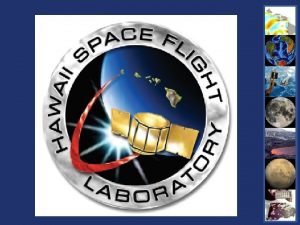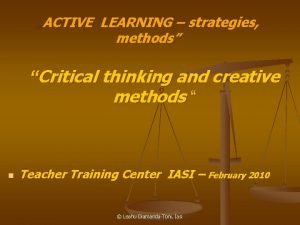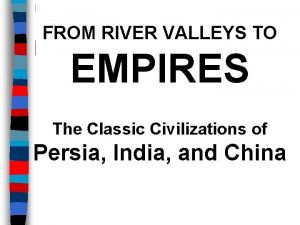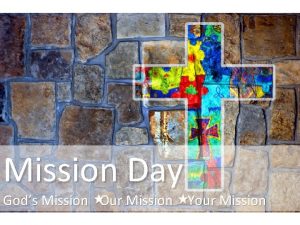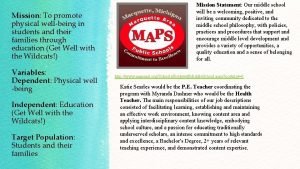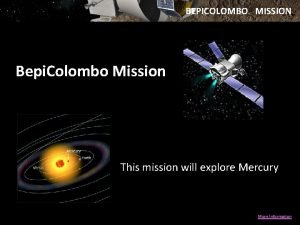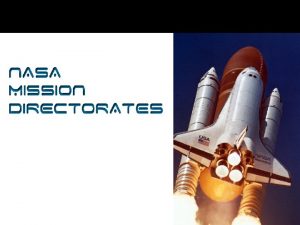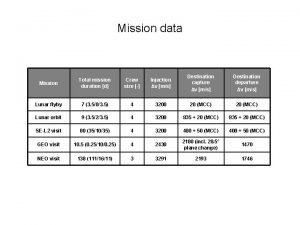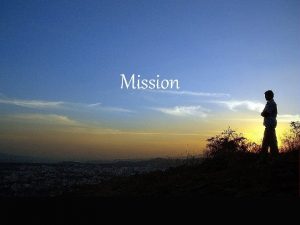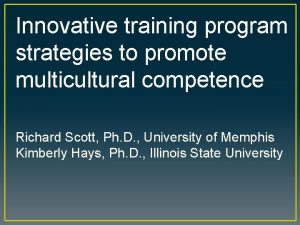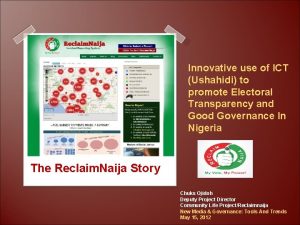The mission of HSFL is to promote innovative















- Slides: 15


The mission of HSFL is to: © promote innovative engineering and science research for terrestrial and planetary space missions © develop, launch, and operate small spacecraft from the Hawaiian Islands to accelerate the validation of new space technologies © provide workforce training in all aspects of unmanned space missions © promote synergistic collaborations between educational, governmental, and corporate institutions interested in space exploration

HSFL Personnel (HIGP) © Lloyd French Luke Flynn © Missions Manager © LEONIDAS-2 Project Lead Ph. D Hawaii ’ 92 Director © Lenny Gouveia Robert Wright © Judy Rubano Ph. D Open U. ’ 99 Data Manager © Tim Williams Keith Horton Ph. D Hawaii ’ 95 Instrumentation © Technical Partnerships Manager © Administrative Lead © Launch Support Manager © Harold Garbeil © Software Engineer © Jason Akagi © Avionics Lead Engineer © Byron Wolfe Paul Lucey Ph. D Hawaii ’ 86 LEO-2 Science Lead G. Jeff Taylor Ph. D Rice U. ’ 70 HSFL “Poster-Guy” © Systems Lead Engineer © Eric Pilger © IT Support Engineer © Lavina Chatlani © Program Facilitator (Person who actually does the work!!!) © Marcia Rei Sistoso © HSGC Program Coordinator

Benefits to HIGP/SOEST © HIGP faculty research opportunities © NASA, NOAA Terrestrial Remote Sensing © NSF Space Weather © NASA Planetary Missions © HSFL leverages greater collaboration and partnership opportunities for HIGP faculty. © NASA Centers and Mission Directorates © Do. D agencies © State agencies and corporations (Nova. Sol) © Demonstrated experience for HIGP Faculty as Mission PI – NASA Programs © Highly competitive research proposals © End-to-end mission support capability based entirely in Hawaii. © Added attraction for new faculty hires.

Benefits to State of Hawaii © State Economic Infrastructure © 2 -6 planned launch activities beginning in 2011 will require infrastructure support network for satellite and rocket components © At least 60 new technical jobs related to aerospace © 6 new HSFL-related program management teams at PMRF consisting of 3 people © 3 launch crews of 15 technicians each © ? ? More positions for telemetry and range support © Tens of millions in UH/State revenue © Windward Community College © Offers Associate Degree in Aerospace serving as a pipeline to HSFL programs. © Aerospace Lab will serve as outreach and educational component of HSFL. Dr. Joseph Ciotti will lead effort. © Upgrades to Windward CC Aerospace Lab will serve as “virtual” Mission Control Center for the HSFL. © Kauai Community College © Training program established through Kauai CC © High paying, high technology jobs for State residents

Science Mission: CRESPO Coral Reef Observations © Global , comprehensive, quantitative survey and distribution of living coral. © Hyperspectral remote sensing © 450 km near polar circular orbit © 1 year duration minimum © >3000 total target scenes Partnerships University of Hawaii © HIGP © HSFL © SOEST NASA Ames Research Center Novasol Impementation Ames © Bench top to Mission (Utilizing pressure vessel architecture) Novasol © Small 60 -band hyperspectral imager © Micro HIS VNIRwith sorting filter (800 -100 nm) Organization © UH/HSFL: Management © Ames, SOEST: Science Costs team © Ames: S/C development © Privately funded mission © HIGP, Novasol: Instrument (Castle Foundation and © UH/COE: S/C integration Google) and environmental test © Ames is seeking internal © Ames, HSFL: Ground for S/C labor cost. stations © UH/HSFL: Science © Estimated costs $6 -7 M. Operations © Study is still ongoing. © Ames: S/C Operations funds

Science Mission: CRESPO II Parameter Requirement for Maritime Hyperspectral Imaging from Space Rationale Off-nadir pointing +/-30 deg To increase scene access frequency Spectral Range © 400 - 800 nm • 800 -1000 nm or 900 -1800 nm ©Water-penetrating wavelengths ©NIR for atmospheric correction Spectral Channel Width 10 nm Sufficient resolution to resolve spectral features Signal to Noise Ratio > 200 to 1 for a 5% surface albedo scene Provides adequate residual SNR after atmospheric removal Polarization Sensitivity < 5% Sensor response to be insensitive to polarized atm light Ground Sample Distance 100 meters ( 30%? ) Comparable to scale of coastal features Scene Size Hundreds to Thousands of square kilometers To encompass the scale of coastal dynamics

HSFL Facilities: Launch Support © Pacific Missile Range Facility (PMRF) ©Local launch facility and mission support ©Using launcher within PMRF boundaries ©HSFL/UH to enter into host-tenant agreement with PMRF that will allow HSFL launch facility.

Launch Vehicle © Kauai Test Facility (KTF)/ Sandia National Lab © Experience with solid rockets and missile design. © Heritage working with PMRF as on -site contractor © SPARK-I: Space-borne Payload Assist Rocket – Kauai. Can send 150 kg to low-Earth orbit (400 km) © Future SPARK II: 300 kg to low. Earth orbit © SPARK II capable of planetary missions © KTF will provide technology transfer to University of Hawaii

Integration and Test © College of Engineering facility with 5300 square feet of space © Vice Chancellor for Research and SOEST Dean allocate funds for clean room equipment. © Clean rooms in UH/POST will be used to assemble satellites. © Systems integration © Thermo-vac testing © Vibration testing © Electronics testing for launch vehicle component integration

Spacecraft © Partner with NASA Centers and others to advance small spacecraft design. © Design, build, launch, and operate 30 -70 -kg microsatellite that can be configured for a variety of science and educational tasks. © Support technology validation missions for NASA as well as other University or corporate missions. © Draw from cadre of EE and ME students in Co. E Cube. Sat Group

Mission Operations © UH/HSFL maintains receiving stations that will be moved to roof of Holmes in 2009. © Ground station provides command control broadcast as well as data downlink capabilities. © Mission Ops Center in POST 527. © Back-up Mission Ops from PMRF.

Funding and Support © Current Support © Congressional © FY 08: $3. 277 Million through Army Space and Missile Defense Command © FY 09: $3. 884 Million through Air Force Operationally Responsive Space © UH/SOEST © $1. 4 Million: HSFL Mission Ops Center, HSFL Integration and Test Facility © Other Support © Rocket Motors © MDA: 4 GEM-40 first stage motors = $8. 8 Million © SNL: 2 Star-27 third stage motors = $2. 2 Million © Pending AF/ORS: 2 SR-73 second stage motors = $3. 2 Million © Future Pending ULA: 73 GEM-46 first stage motors ~ $160 Million © Motors would be donated to UH/HSFL © Vandenberg Air Force Base Scout Launcher © Telemetry Support: NWSC Corona

HSFL Future Prospects © HIGP faculty research opportunities with new HSFL missions. © Funds from launch operations would be used to stimulate new HIGP faculty research and mission concepts. © UH to become the gateway for university-class and small satellite space access. Potential to relieve logjam of national small satellite projects waiting for space validation of hardware. © UH to provide unique, one-of-a kind student training and research opportunities from spacecraft design to launch to on-orbit operations. © Reliable, low-cost access to Earth orbit for small payloads. © Total cost is $9. 0 million/launch; $2. 25 million each for 4 small satellites. © Workforce development and training spawning hitechnology activities on many islands.

HSFL Summary © If Hawaii were a country, we would be the 8 th “nation” in the world to have this capability. Instead, we’ll be the only university worldwide that can do build, launch and maintain satellites in space. © HSFL is seeking new proposals for science and technology demonstration missions to support HIGP, SOEST, and UH faculty research!
 Hsfl
Hsfl Fccla mission
Fccla mission Ead 520
Ead 520 What is fcclas tagline
What is fcclas tagline Implement tasks that promote reasoning and problem solving
Implement tasks that promote reasoning and problem solving Protect, promote, and improve the health of all people
Protect, promote, and improve the health of all people Active learning strategies to promote critical thinking
Active learning strategies to promote critical thinking Promote active participation
Promote active participation Active learning strategies to promote critical thinking
Active learning strategies to promote critical thinking How did the adams onis treaty promote nationalism
How did the adams onis treaty promote nationalism Kelly gallagher deeper reading
Kelly gallagher deeper reading Which of the following is a strategy to promote leveling?
Which of the following is a strategy to promote leveling? How did the mauryan empire’s army help to promote trade?
How did the mauryan empire’s army help to promote trade? How to advertise accounting services
How to advertise accounting services Community meal examples
Community meal examples How do national governing bodies promote sport
How do national governing bodies promote sport
